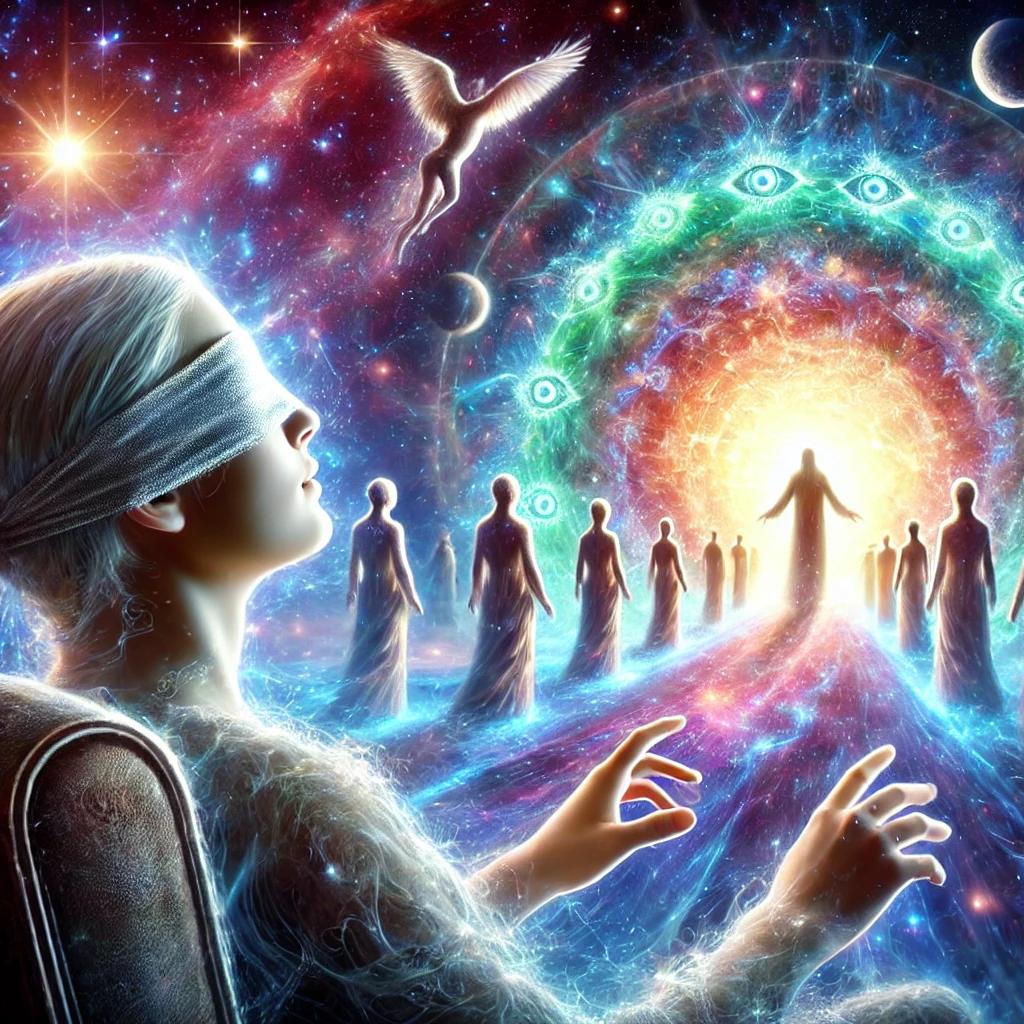Can Blind People See During a Near-Death Experience? The Answer Will Shock You
Can blind people see during NDEs? This question has fascinated researchers, skeptics, and spiritual seekers alike. Near-death experiences (NDEs) often include reports of bright lights, tunnels, and spiritual beings, but what happens when the person experiencing it has been blind their entire life? The answer is shocking and thought-provoking.

What Is a Near-Death Experience (NDE)?
A near-death experience (NDE) is a profound, often life-changing event that occurs when a person is close to death or experiences a severe medical crisis. These experiences typically include:
- A sense of leaving the body (out-of-body experience, or OBE)
- Traveling through a tunnel
- Seeing deceased loved ones or spiritual beings
- Feeling a sense of peace and unconditional love
- Witnessing a “life review”
- Seeing bright light or otherworldly landscapes
While many of these accounts come from sighted individuals, what happens when a blind person reports seeing these visuals? Can blind people see during NDEs, or is there another explanation?
Case Studies: Blind Individuals Who “Saw” During an NDE
1. The Case of Vicki Umipeg
Vicki was born blind due to a condition called retinopathy of prematurity. She had never seen light, shapes, or colors in her life. However, after a car accident left her clinically dead, she experienced an NDE where she suddenly saw herself lying on the hospital bed. She also saw doctors working on her and described detailed visual elements like people’s hair, colors, and even her own body—things she had never perceived before.
2. Dr. Kenneth Ring’s Research on Blind NDEs
Dr. Kenneth Ring, a well-known NDE researcher, studied numerous cases of blind people experiencing sighted perceptions during their near-death experiences. His research, published in Mindsight: Near-Death and Out-of-Body Experiences in the Blind, concluded that many blind individuals reported seeing for the first time in their lives during NDEs. Some of these people were born blind, while others had lost their vision due to accidents or diseases.
3. The Near-Death Experience of Nancy
Nancy was blind from birth and had an NDE after a car crash. She described seeing her body from above, intricate details of the hospital room, and even a distant landscape filled with vibrant colors. This is impossible based on conventional understanding of vision and perception.
How Is This Possible? The Scientific Debate
Scientists are divided on why blind people report visual perception during NDEs. Some possible explanations include:
- The Brain’s Ability to Simulate Vision – Some argue that the brain, under extreme conditions, creates hallucinations based on touch, sound, and past experiences.
- Quantum Consciousness Theory – Dr. Stuart Hameroff and physicist Sir Roger Penrose suggest that consciousness exists beyond the brain, possibly in a quantum state.
- Non-Physical Consciousness – Many NDE researchers believe that consciousness is not confined to the physical body, which is why blind individuals may “see” when outside their bodies.
- Neuroplasticity & Memory Recall – Some skeptics argue that NDEs might activate dormant neural pathways that allow a form of visual perception based on prior sensory experiences.
Despite these theories, no scientific explanation fully accounts for how a person born blind can describe visual details with accuracy.
What Do Blind NDEs Suggest About the Afterlife?

Many believe that blind people seeing during NDEs is strong evidence for life after death. If consciousness exists beyond the physical brain, it suggests that vision may not be dependent on biological eyes but rather on a higher form of perception.
- Religious Perspective: Many faiths, including Islam and Christianity, describe an afterlife where people gain a new, perfect form free of earthly limitations.
- Spiritual View: Some NDE survivors claim they had a 360-degree view and could “see” without eyes, suggesting a different mode of perception beyond human limitations.
Skepticism and Counterarguments
Not everyone is convinced that blind NDEs prove the existence of an afterlife. Skeptics argue:
- These experiences could be fabrications or influenced by previous knowledge of what “sight” is.
- Hallucinations caused by oxygen deprivation or brain trauma might explain the visuals.
- The brain may process spatial awareness in a way that allows blind individuals to form visual-like impressions.
However, these arguments fail to explain how lifelong blind individuals describe colors, faces, and specific details they have never encountered before.
Final Thoughts: Do Blind People Really See During NDEs?
The accounts of blind individuals seeing during NDEs remain one of the most compelling mysteries in consciousness research. While science continues to explore possible explanations, these cases challenge our understanding of perception, consciousness, and the nature of reality.
Can blind people see during NDEs? The evidence suggests that something extraordinary is happening, but whether it proves the existence of an afterlife remains up for debate.
What do you think? Share your thoughts in the comments! 👇
Internal Links:
- The Science Behind Near-Death Experiences
- Can You Experience an NDE Without Dying?
- Do NDEs Prove the Afterlife?
External & Outbound Links:
- Dr. Kenneth Ring’s Book: Mindsight
- Quantum Consciousness Theory – Dr. Stuart Hameroff & Roger Penrose

